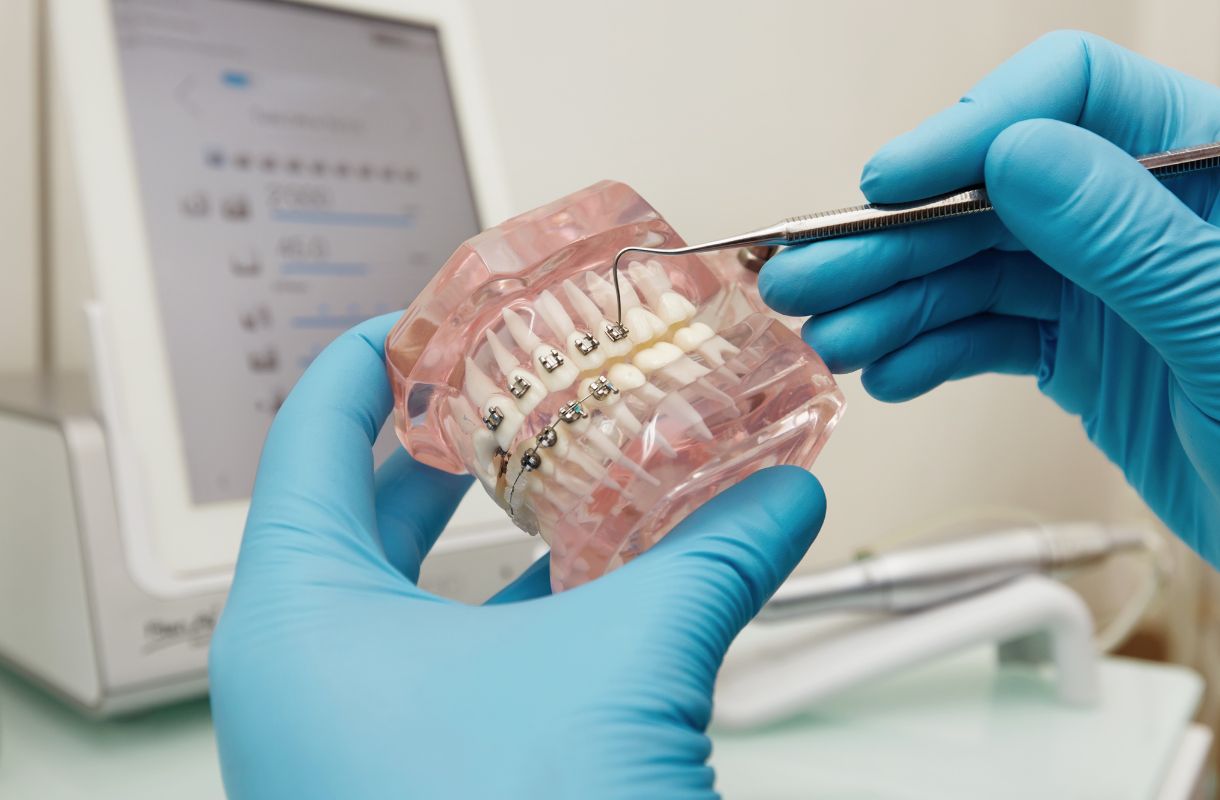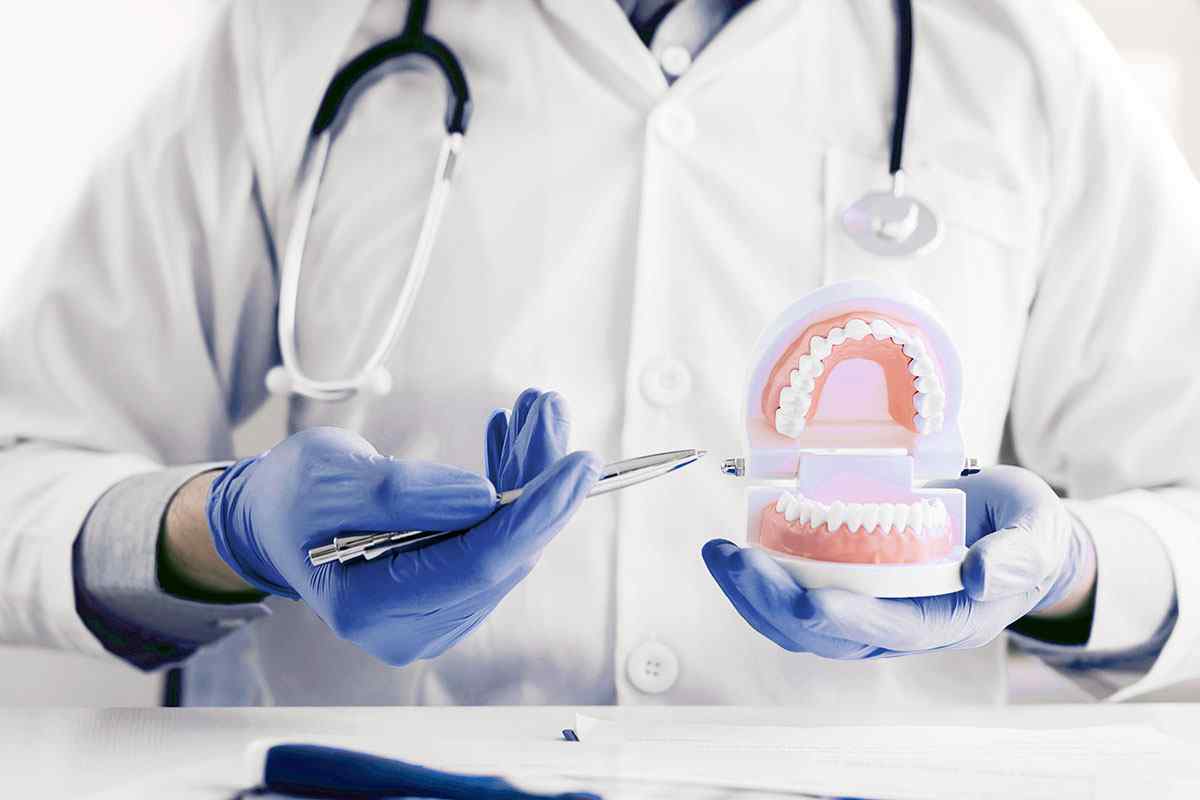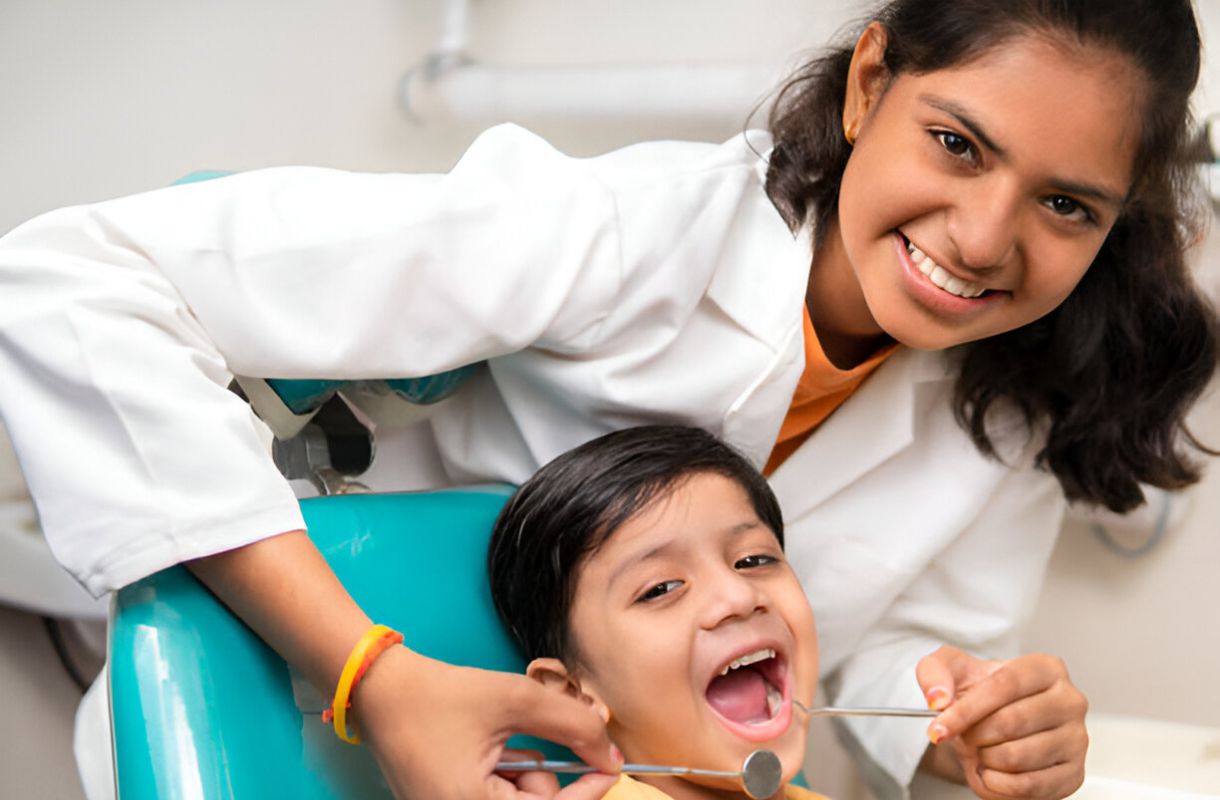What is
Orthognathic Surgery?
Surgical orthodontics, also known as orthognathic surgery, is a specialized field that combines orthodontic treatment with surgical procedures to correct jaw deformities.
This approach is particularly beneficial for patients with severe jaw misalignments that cannot be corrected through orthodontic treatment alone.
Types of Jaw Corrections
This procedure can address a range of dental and facial issues. Some types of jaw surgery include:
Deficient Lower Jaw
For patients with a deficient lower jaw, myofunctional appliances such as the Twin block can be used to improve jaw growth.
The Twin block appliance consists of two parts – an upper and lower component – that work together to push the lower jaw forward, aligning it with the upper jaw.
Deficient Upper Jaw
In cases of upper jaw deficiency, orthopedic appliances like face masks can be employed to enhance upper jaw growth. A facemask is a removable appliance that guides the upper jaw forward, improving overall jaw alignment.
It’s important to note that facemask therapy is only effective in young, growing patients.
Surgical Orthodontics: Indications and Procedures
Understand the steps involved in a surgical orthodontics procedure:
1. Skeletal Class III Malocclusions
This condition is characterized by either a small upper jaw (maxillary retrusion) or a large lower jaw (mandibular prognathism), or a combination of both. In severe cases, patients may have:
- A concave facial profile
- Underbite (lower teeth positioned in front of upper teeth)
- Difficulty biting and chewing
- Speech problems
Surgical correction typically involves maxillary advancement, mandibular setback, or both.
2. Skeletal Class II Malocclusions
This condition presents with either a large or normal upper jaw combined with a small lower jaw (mandibular retrognathism). Patients may exhibit:
- A convex facial profile
- Significant overbite
- Receding chin
- Breathing difficulties or sleep apnea
Treatment often involves mandibular advancement surgery, sometimes combined with maxillary procedures.
3. Deep Bite in Non-Growing Patients
A deep bite occurs when the upper front teeth excessively overlap the lower front teeth vertically. In non-growing patients, severe deep bites may require:
- Surgical repositioning of the jaws
- Segmental osteotomies to reposition specific parts of the jaws
This helps achieve proper bite alignment and prevents excessive wear on the teeth.
4. Extreme Vertical Excess or Deficiency
Vertical maxillary excess can cause a “gummy smile” and long face syndrome, while vertical deficiency can lead to a shortened lower face. Both conditions may require:
- LeFort I osteotomy to reposition the maxilla vertically
- Mandibular procedures to harmonize with maxillary changes
5. Skeletal Asymmetry
Facial asymmetry can result from uneven growth of the jaws or other facial bones. Surgical correction may involve:
- Differential jaw repositioning
- Chin surgery (genioplasty)
- Procedures to address specific areas of asymmetry
In each of these scenarios, surgical orthodontics aims to correct the underlying skeletal discrepancies, improving both function and aesthetics.
The specific surgical procedures are tailored to each patient’s unique needs and are typically combined with orthodontic treatment before and after surgery for optimal results.
At Smiline, various surgical procedures are available to address these issues:
- Anterior-posterior corrections:
- Maxillary surgery (upper jaw) for advancement or retraction
- Mandibular surgery (lower jaw) for advancement or setback
- Vertical corrections involving both maxillary and mandibular surgery
- Transverse corrections for both jaws
- Skeletal open bite correction
- Genioplasty (chin surgery)
Planning Orthognathic Surgery
The planning process for orthognathic surgery is comprehensive and involves:
- Clinical examination: Involves a thorough assessment of the patient’s oral health, including teeth alignment, bite relationship, and soft tissue evaluation.
- Socio-psychological evaluation: Assesses the patient’s motivation for treatment, expectations, and potential psychological impact of orthodontic intervention.
- X-rays, photographs, and cephalometric evaluation: Includes panoramic x-rays, lateral cephalograms, and intraoral/extraoral photographs to analyze skeletal and dental relationships.
- Study model analysis: Involves taking impressions to create plaster casts of the teeth, allowing for detailed examination of tooth positions and occlusion.
- Prediction tracing: Uses cephalometric tracings to predict post-treatment outcomes and plan tooth movements.
- Model surgery procedure: Simulates potential surgical outcomes on dental models for cases requiring orthognathic surgery in conjunction with orthodontic treatment.
Cost of Jaw Surgery in India
The cost of jaw surgery (orthognathic surgery) in India can vary widely depending on several factors. Here’s a breakdown of the costs:
- Average Cost Range:
- The average cost of orthognathic surgery in India ranges from ₹59,943 to ₹1,99,838.
- Specific Types of Jaw Surgery:
- Upper Jaw Surgery: ₹20,960 – ₹31,45,840
- Lower Jaw Surgery: ₹41,920 – ₹62,880
- Double Jaw Surgery: Approximately ₹32,00,000
- Genioplasty (chin surgery): ₹83,760 – ₹1,04,720
FAQs
Yes, jaw surgery is considered a major surgery. It involves cutting and repositioning the bones of the jaw and can require a hospital stay of 1-4 days.
Jaw surgery itself is not usually painful as it’s performed under general anesthesia. After surgery, patients may experience discomfort and swelling, but this is typically managed with pain medication.
There’s no strict upper age limit, but jaw surgery is usually performed after growth stops – around ages 14-16 for females and 17-21 for males. Healthy middle-aged adults can also be candidates.
Yes, teeth may need to be realigned after jaw surgery. Many patients wear braces before and after surgery to ensure proper alignment.
When performed by an experienced surgeon, jawline surgery is generally considered safe. However, like any surgery, it carries some risks such as infection, nerve injury, or need for further surgery.
Orthodontics
Get In Touch With Us
+91 7702425551 - Hitech City
Book An Appointment
Book a visit to Smiline, simply fill out the form below and we will contact you back regarding the intervention you require.



